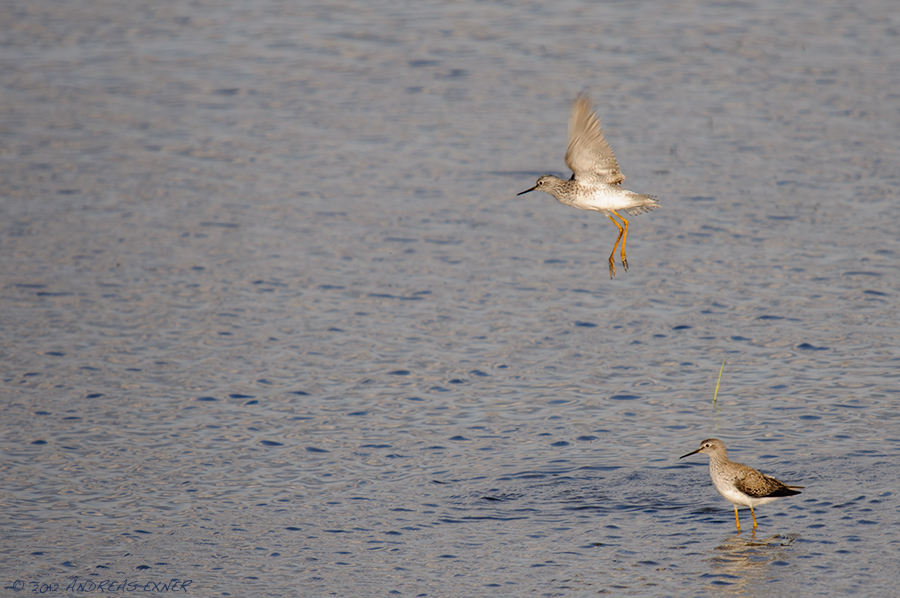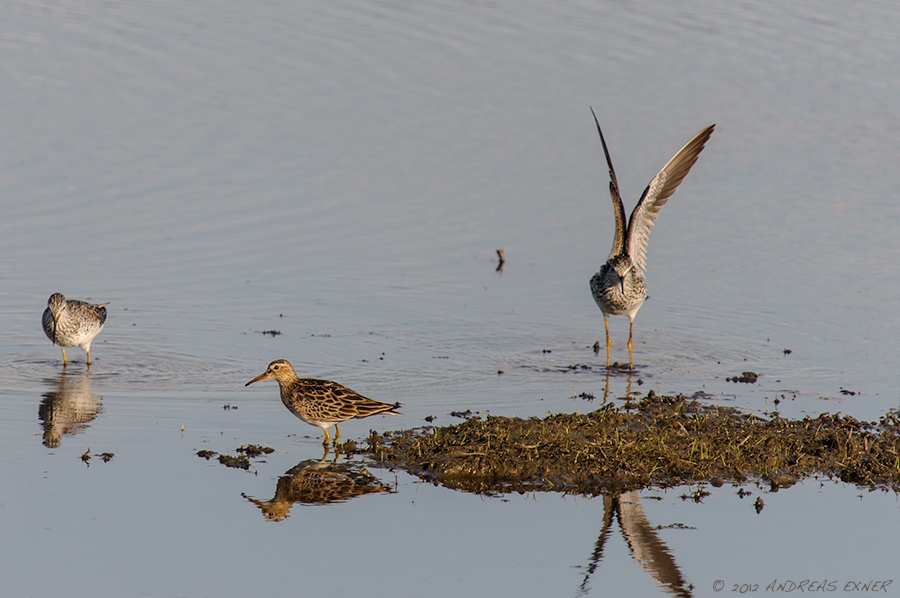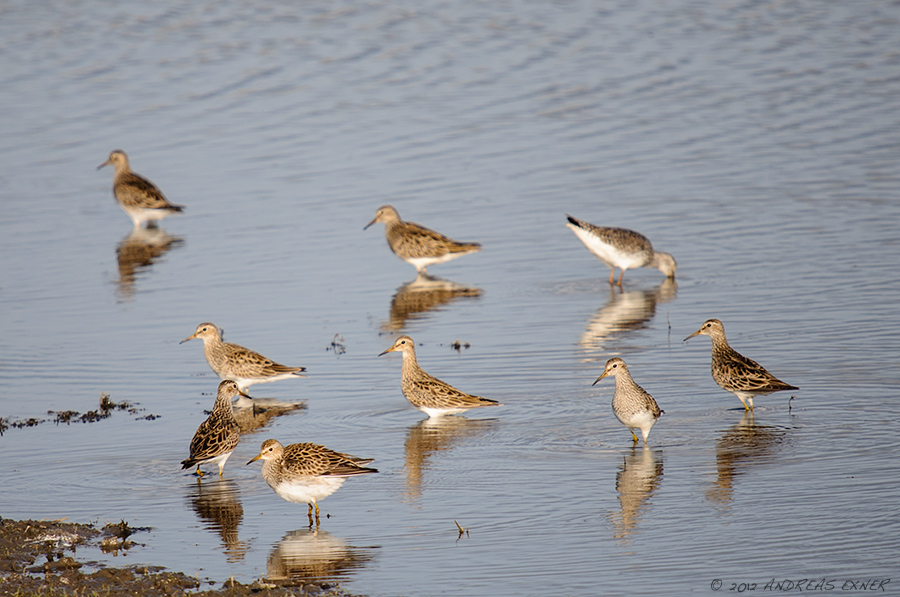



This Semipalmated Sandpiper should be in the lower Arctic regions by now, where it usually breeds during the summer. Nobody probably knows what inflicted the large wound below its left wing. This could be the reason that the little guy was left behind during migration. It may have been a bird of prey or any other predator the sandpiper maybe managed to escape from. However, it seemed to do OK and the bird enjoyed a bath and the following drying and preening process of its feathers at the boat launch of Finley’s Landing at the Mississippi.
As always, sandpipers are not easy to identify (at least for me). There are many combinations of feather patterns and color changes, and that’s why I put a question mark behind its name in the headline of my post. If you have another idea, please let me know. I’m always open for suggestions and like to learn the differences.






